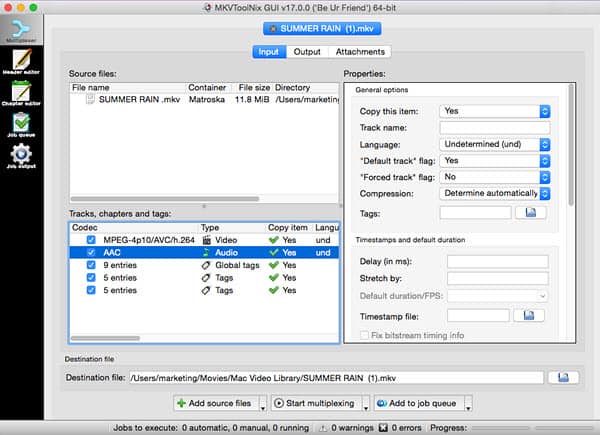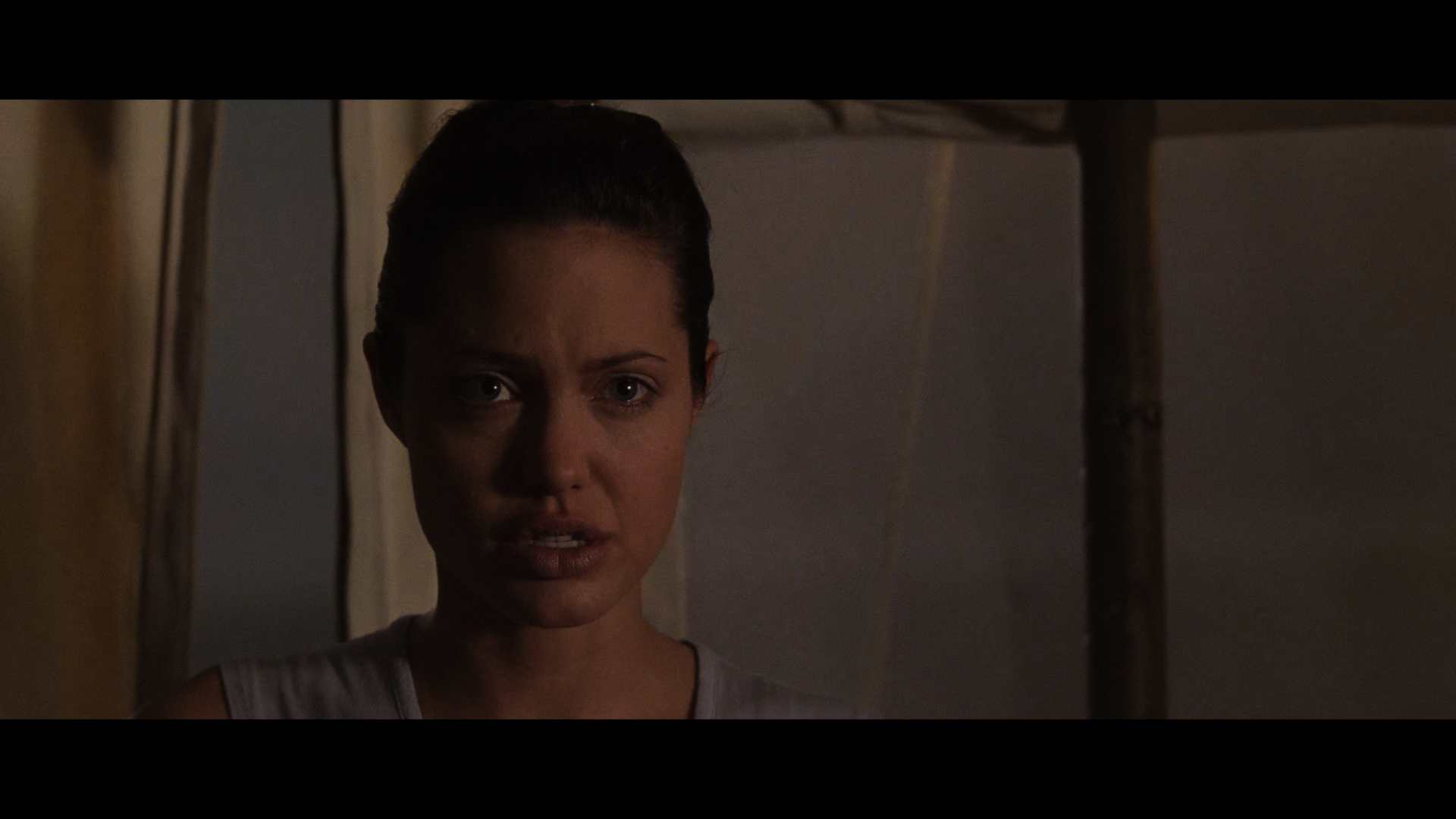First of all: only the MKVToolNix GUI stores anything in a permanent way. The other programs don't. Where the GUI stores its files depends on the operating system and the installation method used. General information The settings (the stuff you can configure via its preferences dialog) are stored in a single INI-style file called mkvtoolnix-gui. Boost: 1.75.0: Collection of portable C source libraries: flac: 1.3.3: Free lossless audio codec: fmt: 7.1.3: Open-source formatting library for C: gettext. Apr 09, 2021 MKVToolNix is a small collection of tools (mkvmerge, mkvinfo, mkvextract, mkvpropedit and mmg) that allows you to manipulate Matroska (MKV) files in several ways. You can use MKVToolNix to create, split, edit, mux, demux, merge, extract or inspect Matroska files. MKVToolNix GUI is a versatile utility that will let you alter, generate, and inspect multimedia files. If you decide to install the MKV manager onto your computer or laptop, then you will not use a lot of resources because the program is lightweight. MKVToolNix is safe and advertisement free. There is a tab on their website that details the. MKVToolNix, is a set of tools (e.g. Mkvmerge gui, mkvinfo) to create, alter and inspect Matroska files under Linux. As both Matroska and MKVToolNix are under heavy development here’s how to install the latest release from its official repository and keep it up-to-date through Software Updater.
I streamed a few DJ sets over the last few weeks with a bunch of friends as part of ‘covidcore’, an online get-together while we’re all in isolation. It’s been a while since I’ve played any DJ sets but it was great fun and thankfully I didn’t make too many mistakes.
Anyway, It was my first streaming experience and I found it a breeze to set up thanks to Twitch and OBS. When reviewing my recordings I noticed that my microphone level was pretty low so I decided to bust out the audio track from the video and raise it. Also when uploading my video to Youtube I also got a copyright notice about one the clips in my video which was subsequently being blocked, so I decided to edit that out too.
Here is how you can do it.
Note: I’m on a mac so all of the instructions are for that, but apart from installation the rest should be platform agnostic.
Steps

- Install mkvtoolnix
- Extract audio and video tracks from mkv file
- Optionally convert audio track if editing needed
- Merge audio and video tracks back in to mkv file
Install mkvtoolnix
Mkvmerge Installation
mkvtoolnix is a set of command line programs for finding out information and modifying mkv (“Matroska”) files. You can install it with a GUI but I didn’t bother.
That’s it, boom!
Extract audio and video tracks from mkv file
For this step we are going to run this command
In the above command we are using mkvextract, part of mkvtoolnix, to extract the video track which is encoded using the ‘h264’ codec and also the audio track which is encoded using the AAC codec.
In order to find out what your video and audio tracks were encoded with use the following tool
Introduction
Might be good to reference the docs if you have trouble there.
Optionally convert audio track if editing needed
My audio editor couldn’t open the aac file I created so I converted it to FLAC format using ffmpeg, another command line program that is insanely useful for converting audio formats (amongst other things).
So to convert I ran
Now I can open my flac file and edit the parts I want, like amplifying my microphone in the recording.
Brew Install Mkvmerge

Cached
Merge audio and video tracks back in to mkv file
Right, now you have completed your editing we can stitch them back together again using the mkvmerge command
You can see I just merged the flac formatted audio back in. I just tried it and it worked. I need to read up a bit more on file formats to be honest so if you need more info check the docs.
Hope that helps someone :)
